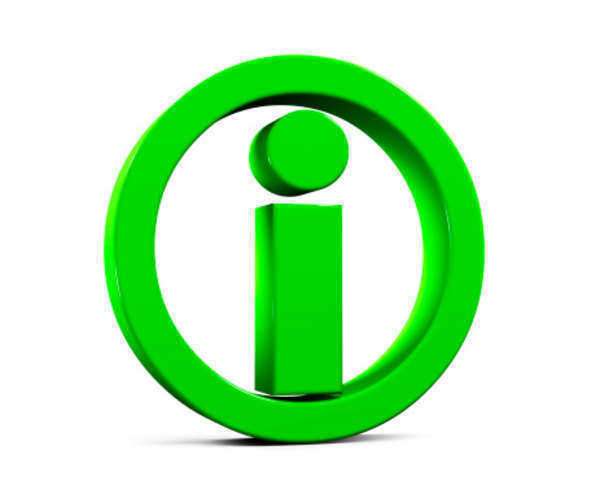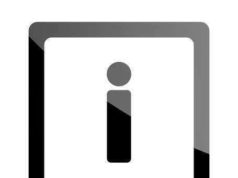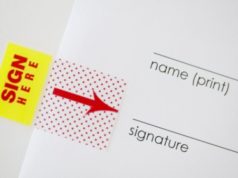
When any given party affixes his or her signature to a negotiable instrument, that party may be inviting some level of liability for the costs incurred by the instrument. This is because signatures bear the weight of law behind them and affixing a signature to a negotiable instrument is essentially a form of endorsement for the negotiable instrument.
Most of the time, such signatures fill a clear and differentiated role with regard to the negotiable instrument. For instance, the signature of the drawer fills a different role than the signature of the payee on a check, and any endorsements made with addenda or other notations will likely specify the exact form of relationship between the signer and the overall negotiable instrument.
Primary
The signer who holds primary liability for the negotiable instrument is usually the maker, issuer, or acceptor of that instrument. Holding such primary liability means that the party in question is primarily responsible for the payment of the negotiable instrument. Any claims of payment on the negotiable instrument will, by definition, come to the party holding primary liability for that instrument first and will only reach any other party on the condition that the primary liability holder does not or cannot make payment on the negotiable instrument. In this case, the primary liability holder would be dishonoring the negotiable instrument by failing to pay it.
There are ways in which the primary liability holder could actually avoid dishonoring the negotiable instrument while still avoiding payment for that instrument. But the situations in which such an act is possible are highly specific, and in general, the primary liability holder will have to make payment when the holder of the negotiable instrument presents it for payment, assuming that it is presented for payment in a timely, appropriate fashion. For drafts, as there are three parties involved, the party holding primary liability for the draft will be the drawee, from whom payment is ordered by the drawer for the payee.
For promissory notes, on the other hand, the party holding primary liability for the note will be the issuer or maker of the note, as a promissory note is a promise from the issuer to pay another party. For more information on primary liability and exactly what it entails, follow the link.
Secondary
Secondary liability is the “next line of defense” after primary liability. When a given negotiable instrument has been dishonored by the party holding primary liability, the parties holding secondary liability become liable for payment on the instrument. For drafts, the secondary party is normally the drawer of the draft, taking up liability after the draft was dishonored by the drawee. For promissory notes, on the other hand, there is often no clear secondarily liable party, however, as the only party to the note may be the original issuer.
If there are any endorsers of a draft or a promissory note, then moving up the line of these endorsers will provide the next parties holding secondary liability, assuming that there are no defenses such parties can mount so as to protect themselves from any such liability. Some examples of such defenses include any status as a holder in due course, or qualified endorsements of the negotiable instrument which would pass liability on to the next endorser in the chain.
In order for secondary liability to be called on, certain specific requirements must have been fulfilled, including a requirement to notify the secondarily liable party in a reasonable amount of time, such that the party might be able to take necessary action with regard to the negotiable instrument in question.
Secondary liability might seem to be potentially unfair, as the secondarily liable parties will often have performed no wrong and essentially are being made liable because of the primarily liable parties’ faults. But secondary liability is necessary to protect the interests of the parties purchasing or paying negotiable instruments, as without such secondary liability, the instruments might be sold and then never paid off.
Furthermore, secondarily liable parties might possibly have legal recourse to obtain some form of monetary restitution from the primarily liable party. To learn more about secondarily liable parties and the requirements for transferring liability to them, click the link.
Accommodation Party
An accommodation party is a special form of party to a negotiable instrument. Generally, accommodation parties are only involved with those negotiable instruments that are loans of some kind, such as promissory notes.
The point of an accommodation party’s signature on a negotiable instrument is to lend credence to the validity and trustworthiness of that instrument. Essentially, the accommodation party is backing up the negotiable instrument to which he or she is affixing his or her signature, ensuring that if the primarily liable party defaults on the payment of the negotiable instrument, then the accommodation party will be held liable for the payment.
The accommodation party is thus willingly becoming a secondarily liable party to the negotiable instrument. The reason for doing this is generally as a favor to the primarily liable party. If a given individual were to attempt to obtain a loan, but the loaning party decided that this individual was unlikely to successfully pay back the loan, then the loan might be denied. But with the assistance of an accommodation party, the loaning party would have some level of assurance that the loan would, eventually, be paid off. Then, the loaning party might be able to secure the loan.
Accommodation parties are thus getting very little out of signing onto a loan in this fashion; they certainly cannot make any money from such a practice. In the event that an accommodation party would become liable for the promissory note or other negotiable instrument which the party signed, that party would eventually be able to seek restitution from the primarily liable party, and therefore, theoretically at least, might not be risking anything by becoming an accommodating party. To learn more about accommodating parties and their role in transactions surrounding negotiable instruments, click the link.
Authorized Agents
Just as for almost any other legal proceeding, a given party to a negotiable instrument can nominate a duly authorized agent to act in that party’s stead. Such an agent could, in fact, sign negotiable instruments on behalf of the authorizing party.
The question then immediately arises as to who would be liable in such an instance, as the authorized agent would be the one actually affixing his or her signature to the negotiable instrument, but he or she would be doing so on the behalf of a different party.
The Uniform Commercial Code provides for such instances with a clause which holds that as long as the agent is acting demonstrably on the behalf of another party, then the agent cannot be held liable for the negotiable instrument, while the authorizing party will be treated as if it had directly affixed its own signature to the negotiable instrument.
The authorized agent might, however, become liable for putting its signature on a negotiable instrument if the authorized agent fails to successfully identify the authorizing party, as identifying the authorized party is necessary for determining what party is then secondarily liable for the negotiable instrument.
Authorized agents may also sometimes have limits to their power, and those limits might further affect whether or not they are held liable for their signatures upon negotiable instruments. Additionally, authorized agents can take certain measures on their own initiative to protect themselves from any liability. For more information on the relationship between authorized agents and negotiable instruments, follow the link.
Unauthorized Signatures
Though authorized signatures are legitimate and useful under the Uniform Commercial Code, unauthorized signatures are problematic. An unauthorized signature on a negotiable instrument designed to illegitimately make that instrument payable is a form of forgery, and therefore, is a criminal offense.
The Uniform Commercial Code does not focus on prosecution of criminal offenders, however, and instead focuses on protecting parties involved with such an unauthorized signature on a negotiable instrument. As such, the Uniform Commercial Code actually provides for unauthorized signatures to be ratified, if they are on a negotiable instrument which a third party either bought or paid for in good faith without any knowledge of that forgery.
In such an instance, the third party would be a holder in due course and would thus be protected from any defense against paying the negotiable instrument. The result is that a bank which cashes a check with an unauthorized, forged signature, could still use the check to add to its own funds regardless of any defense mounted by the victim of the forgery.
Any other form of unauthorized signature is considered ineffectual, however, and if such a forgery is discovered, it would nullify transactions made with that negotiable instrument. Furthermore, regardless of the ratification of a negotiable instrument bearing a forged signature, the party perpetrating the forgery will not be held exempt of the criminal or civil liability incurred by its actions. To find out more about unauthorized signatures and how they might affect negotiable instruments, click the link.


























